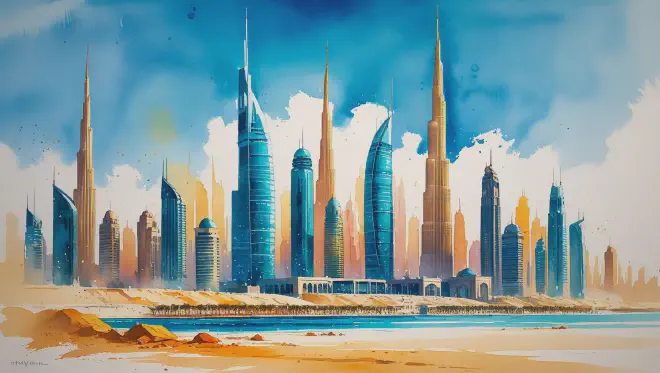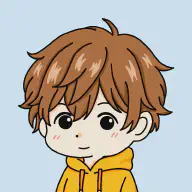Introduction
Doha, Qatar—called the Pearl of the Persian Gulf. The capital of this small peninsular nation on the Arabian Peninsula is a rare city where traditional Arab culture and modern urban development have merged beautifully within the unique geographical environment sandwiched between desert and sea.
This land, once prosperous from pearl diving, underwent dramatic transformation through oil and natural gas development in the latter half of the 20th century. Today, futuristic skyscrapers tower beyond the desert horizon, while traditional souks (markets) coexist with cutting-edge shopping malls. Though Islamic teachings are deeply rooted in daily life, the city also presents itself as an international metropolis that warmly welcomes people from around the world.
The resilience fostered by the harsh desert environment and the openness surrounded by sea. Bedouin nomadic culture and Persian Gulf maritime culture. And above all, the spirit of “karam”—the Arabic word meaning “hospitality”—breathes through this land where I would spend three days walking my journey.

Day 1: Arrival Wrapped in Desert Light
Upon landing at Hamad International Airport, the first thing that caught my eye was a giant teddy bear sculpture. This artwork, called the Lamp Bear, welcomes travelers as the airport’s iconic symbol. The airport itself was beautiful like a work of art, impressively incorporating elements of traditional Arabic architecture while maintaining flowing contemporary design.
In the morning, the scenery visible through the taxi window heading into the city was exactly what you’d expect from a landscape where old and new intersect. Skyscrapers suddenly appearing on the desert horizon, with traditional residential areas spreading before them. Ahmed, the driver, proudly told me in fluent English, “Doha is one of the world’s most rapidly developing cities, but we haven’t forgotten our ancestors’ teachings.”
After checking into my hotel, I spent the afternoon walking through the Corniche district. This beautiful waterfront promenade facing Doha Bay extends about seven kilometers and serves as a gathering place for locals. The afternoon sun reflected off the water’s surface, making the high-rise buildings of West Bay district across the bay appear to shimmer like a mirage.
As I walked, I noticed an elderly man in traditional white thobe sitting on a park bench. When I passed nearby, he greeted me with “As-salamu alaykum.” When I responded with “Wa alaykum as-salam,” his face brightened immediately. Through broken English, Arabic, and gestures, he shared stories of pearl diving from his youth. His words, “The sea was our treasure. It still is,” left a lasting impression.
As evening approached, the adhan—the Islamic call to prayer—echoed throughout the city. Enveloped in this sacred sound, I headed to Souq Waqif. This traditional market, with over six centuries of history, features maze-like narrow alleys lined with shops selling spices, textiles, and handicrafts.
For dinner, I dined at a traditional restaurant within the souq. I ordered machboos, which could be called Qatar’s national dish. This dish of long-grain rice cooked with lamb and several spices spread complex aromas in my mouth with each bite. The restaurant owner, Khalid, carefully taught me how to eat it, saying, “This is my grandmother’s recipe.”
The night at Souq Waqif was enveloped in a special atmosphere. Sweet hookah smoke rose from traditional cafes, and folk music performances began on the streets. Tourists and locals naturally mingled, creating warm exchanges that transcended language barriers.
On my way back to the hotel, I looked up at Doha’s night scene. The scattered lights floating in the desert silence looked like constellations that had descended to earth. Feeling the duality of this city—tradition and innovation, desert and sea, silence and vitality—I fell into deep sleep.
Day 2: Tales of Sand and Sea
I woke to the morning adhan calling for prayer. Doha Bay, visible from my hotel window, glowed golden in the morning sun. For breakfast, I visited a cafe beloved by locals, savoring traditional Arabic coffee and kunafa—a sweet dessert of cheese and syrup.
In the morning, I visited the Museum of Islamic Art. This beautiful building designed by architect I.M. Pei, built on an artificial island in Doha Bay, possessed the majesty of a temple rising from the sea. Inside, I could appreciate Islamic world artworks from the 7th to 19th centuries.
Particularly impressive was the collection of miniature paintings. I lost track of time absorbed in the craftsmanship and high spirituality embedded in each piece. Fatima, the museum guide, explained, “These works are not mere decoration. They are prayers to God themselves.”
After lunch, I joined a desert tour. About an hour’s drive from the city took us to the inland desert. Along the way, we encountered a herd of camels. The sight of people maintaining traditional Bedouin lifestyle, moving through the desert with their camels, gave me the strange sensation that time had stopped.
Standing atop a sand dune, I saw a sea of sand stretching 360 degrees as far as the eye could see. Wind lifted the sand, creating ever-changing ripple patterns like living artwork. Abdullah, our guide, said, “The desert is harsh, but it’s also our mother. It gives us everything and teaches us everything.”
During the afternoon desert experience, I tried sandboarding. The exhilaration of sliding down a 50-meter-high sand dune on a board was exceptional. The sensation of sand particles brushing my cheek, the sound of wind, and the infinitely spreading blue sky. In this space completely isolated from urban noise, I simultaneously felt both nature’s grandeur and human smallness.
In the evening, we had dinner at a Bedouin camp in the desert. The BBQ-style lamb cooked around a campfire, fragrant with spices, stimulated the appetite. During the meal, the camp elder shared old stories. His words, “Desert people know how to read stars, understand wind, and find water. That is our wisdom,” remained in my heart.
As night deepened, countless stars shone in the desert sky. The starry sky seen in an environment completely free from city lights was truly a natural planetarium. The Milky Way was clearly visible, and I witnessed several shooting stars. For centuries, Bedouin people have looked at this starry sky to know direction, read seasons, and find life guidance.
Late at night, returning to Doha’s streets, the city’s vitality welcomed me in contrast to the desert’s silence. However, the memory of profound silence and magnificent nature experienced in the desert was etched deep in my heart. This day’s experience became a precious opportunity to understand the essence of Qatar—the harshness and richness of the desert, and people’s deep respect for nature.
Day 3: Farewell and New Beginnings
The final morning began with watching the sunrise over Doha Bay. Walking along the Corniche promenade, I reflected on these three days of experiences. The moment the sun rose from the horizon, dyeing the sea surface golden and illuminating the high-rise buildings across the bay in morning light, created a scene of truly painterly beauty.
In the morning, I visited Katara Cultural Village. This is a cultural facility where traditional Qatari architecture and contemporary art merge, gathering an amphitheater, art museum, and handicraft shops. In the central amphitheater, local students happened to be practicing traditional dance. In the children’s serious expressions and graceful movements, I felt a strong will to preserve cultural heritage.
At a cafe in Katara Cultural Village, I savored my last Arabic coffee. The deep aroma hidden beneath the bitterness and the refreshing cardamom aftertaste spread through my mouth. At the next table, a heartwarming scene unfolded of a grandfather telling folk tales to his grandchild. It was a moment that made me feel the power of stories passed down through generations.
In the afternoon, for last-minute shopping, I visited Souq Waqif once more. The souq showed a different daytime face from the previous night—a lively market where sunlight danced on stone pavement and colorful goods were displayed. At the spice shop, the owner let me try various spices. Saffron, cardamom, cinnamon… each had its own story, each embedded with cultural memory.
For lunch, I dined at a small restaurant popular with locals. I ordered “shawarma,” a simple burger-like Arab dish. The meat and vegetables cooked with spices and wrapped in thin bread had a simple yet deep flavor. The elderly couple running the shop said in broken English, “Please come again.”
Until my evening departure, I walked the Corniche once more. This time I headed in the opposite direction toward Museum Park. Along the way, I encountered a local family flying kites with their children. The colorful kites dancing in the blue sky seemed like symbols of hope and freedom.
I chatted briefly with the father, Mahmoud. His words, “Qatar is a small country, but we welcome people from all over the world. Having travelers like you understand our culture makes us happier than anything,” made me feel anew the warmth of this country’s people.
In the taxi heading to the airport, the driver Yusuf asked, “How was Doha?” I answered, “The desert and sea, tradition and innovation, and the warmth of the people. Everything was impressive.” He nodded with satisfaction and said, “That is Qatar’s soul.”
While completing departure procedures at Hamad International Airport, I reflected on this three-day journey. The infinite expanse of the desert, the gentle sparkle of the sea, the lively atmosphere of the souq, and above all, the smiles of the people I met. Each moment was deeply etched in my heart.
While waiting for boarding, I gazed outside through the airport’s huge windows. Beyond the runway stretched the desert, and beyond that, the sea was visible. In this natural harshness and beauty, people had spent long years nurturing their unique culture.
As the airplane took off and I watched Doha’s streets grow smaller from the window, the cityscape that looked like scattered grains of light resembled jewels scattered across the desert. I was certain that this journey was not an end, but the beginning of new understanding and gratitude.
Conclusion
These three days in Doha, though an imaginary journey, became an experience that truly lives in my heart. The memories of being blown by desert winds, hearing ocean waves, smelling spice aromas in the souq, and hearing people’s warm words remain vivid even now.
I came to deeply understand the multifaceted nature of Qatar—the harsh natural environment and rich culture, traditional values and international openness, desert silence and urban vitality—how all these intertwine to create unique charm. And above all, I was able to touch the hospitality spirit of the people based on “karam.”
Travel holds meaning beyond physical movement. It’s about gaining new perspectives, deepening understanding of different cultures, and reflecting on oneself. Through this imaginary journey, I was able to simultaneously feel the world’s diversity and humanity’s universality.
The Doha streets I walked in imagination, the people I met, the food I tasted, the wind and light I felt. All of these, while imaginary, truly exist and have become part of my life. The essence of travel may not necessarily lie in actual movement, but in the movement of the heart and opening doors to new worlds.

